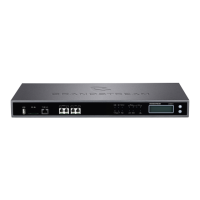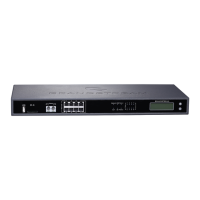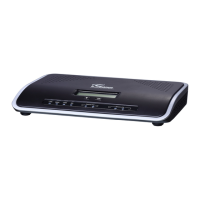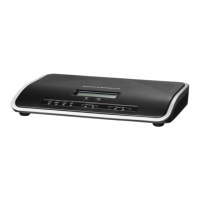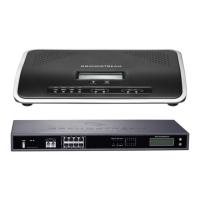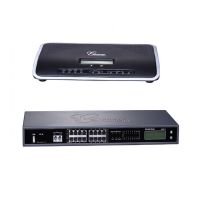P a g e | 138
UCM630X Series User Manual
Version 1.0.2.25
CallerID number that will be used when calling out and receiving direct callbacks.
Select voice prompt language for this extension. If set to "Default", the global setting
for voice prompt language will be used.
Use NAT when the PBX is on a public IP communicating with devices hidden behind
NAT (e.g., broadband router). If there is one-way audio issue, usually it is related to
NAT configuration or Firewall's support of SIP and RTP ports.
The default setting is enabled.
By default, the PBX will route the media steams from SIP endpoints through itself. If
enabled, the PBX will attempt to negotiate with the endpoints to route the media
stream directly. It is not always possible for the PBX to negotiate endpoint-to-endpoint
media routing. The default setting is "No".
Select DTMF mode for the user to send DTMF. The default setting is "RFC4733". If
"Info" is selected, SIP INFO message will be used. If "Inband" is selected, 64-kbit
codec PCMU and PCMA are required. When "Auto" is selected, RFC4733 will be
used if offered, otherwise "Inband" will be used.
When present in an INVITE request, the Alert-info header field specifies an alternative
ring tone to the UAS.
Enable/disable SRTP for RTP stream encryption.
Packet Loss
Retransmission
Configure to enable Packet Loss Retransmission.
Configure to enable Video FEC
Configure to enable Forward Error Correction (FEC).
Access Control List manages the IP addresses that can register to this extension.
Allow All: Any IP address can register to this extension.
Local Network: Only IP addresses in the configured network segments can
register to this extension.
Select jitter buffer method.
Disable: Jitter buffer will not be used.
Fixed: Jitter buffer with a fixed size (equal to the value of "jitter buffer size")
Adaptive: Jitter buffer with an adaptive size (no more than the value of
"max jitter buffer").
NetEQ: Dynamic jitter buffer via NetEQ.
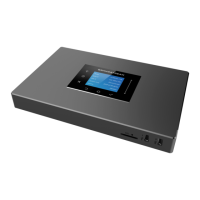
